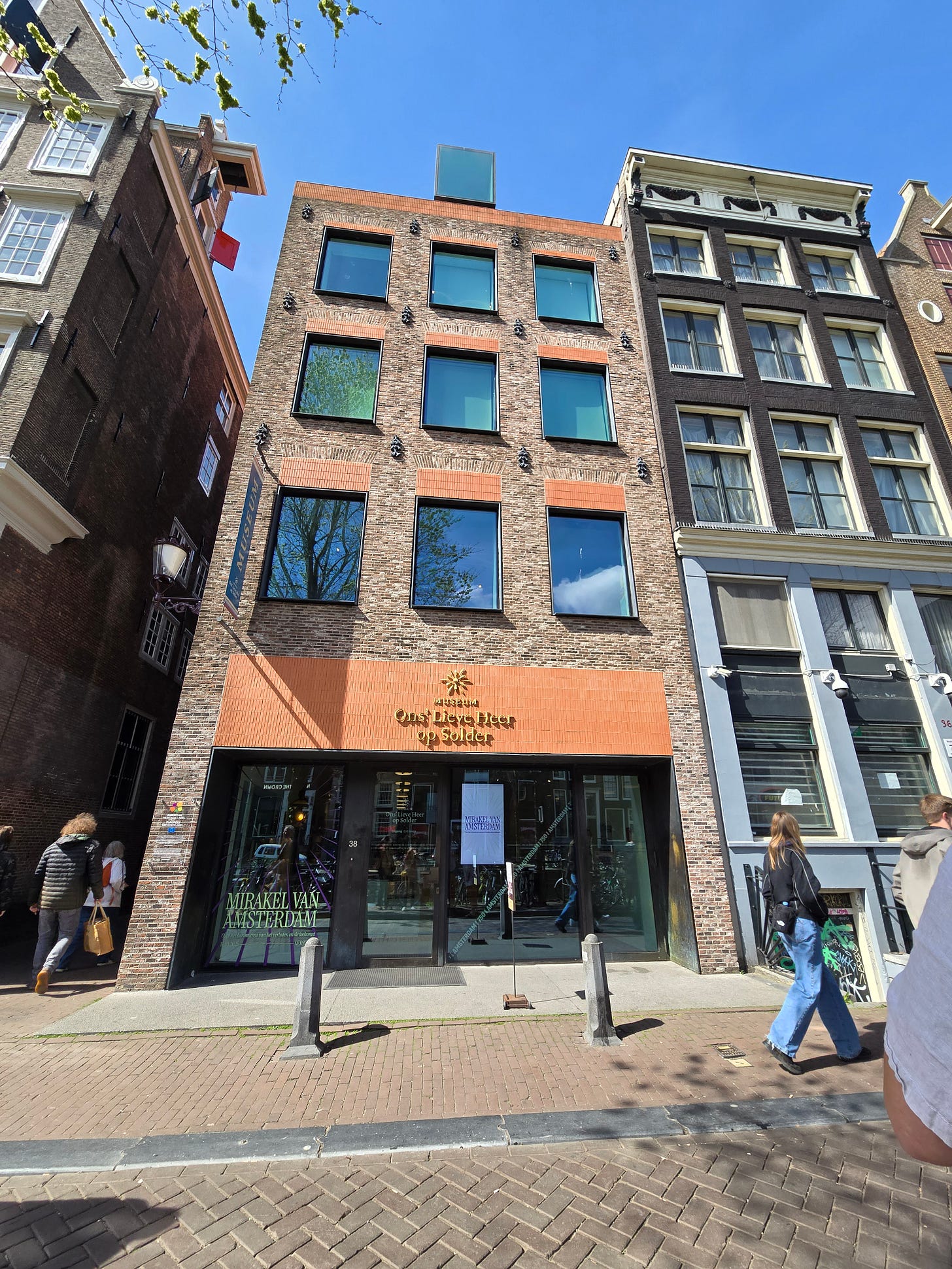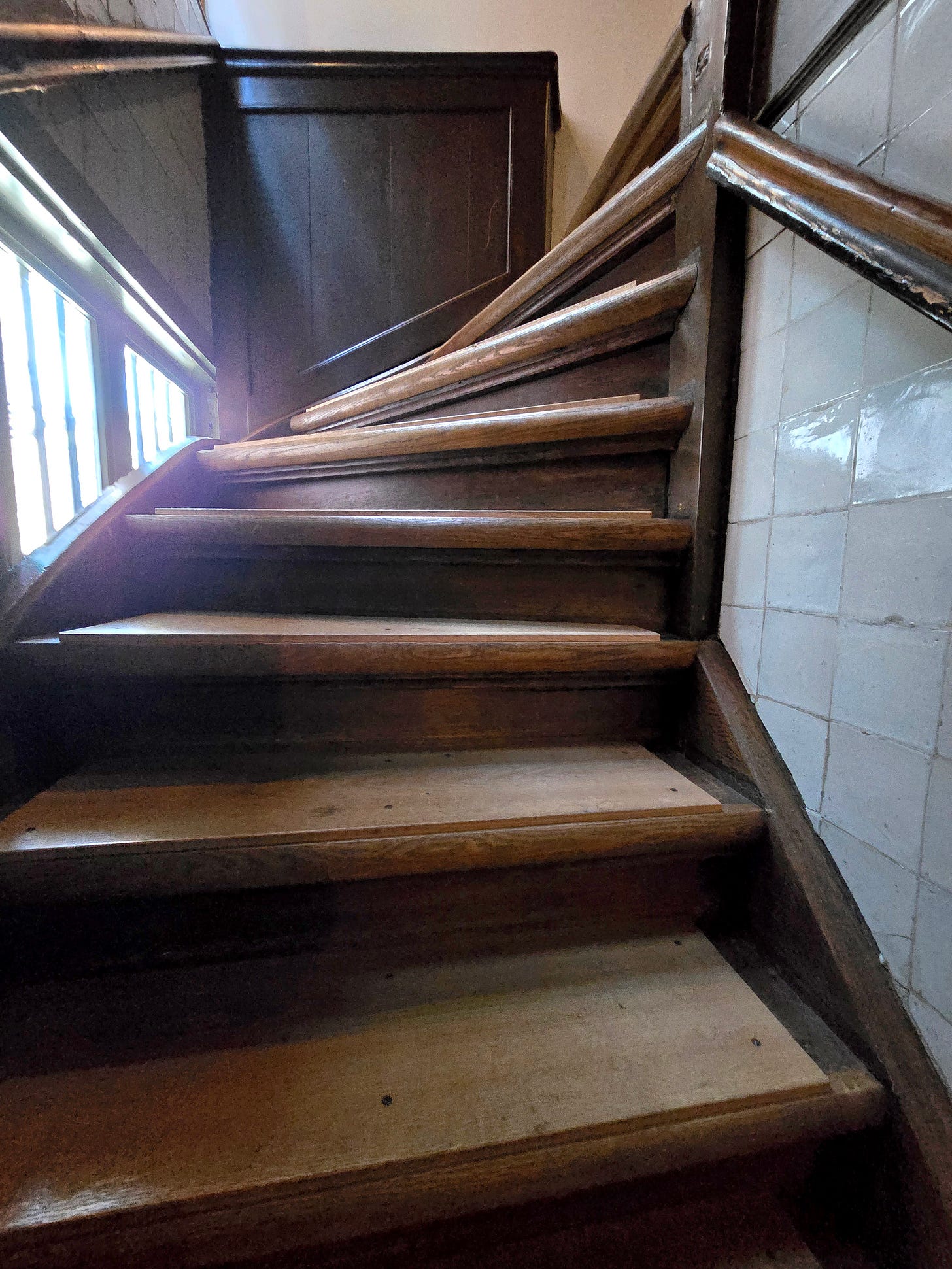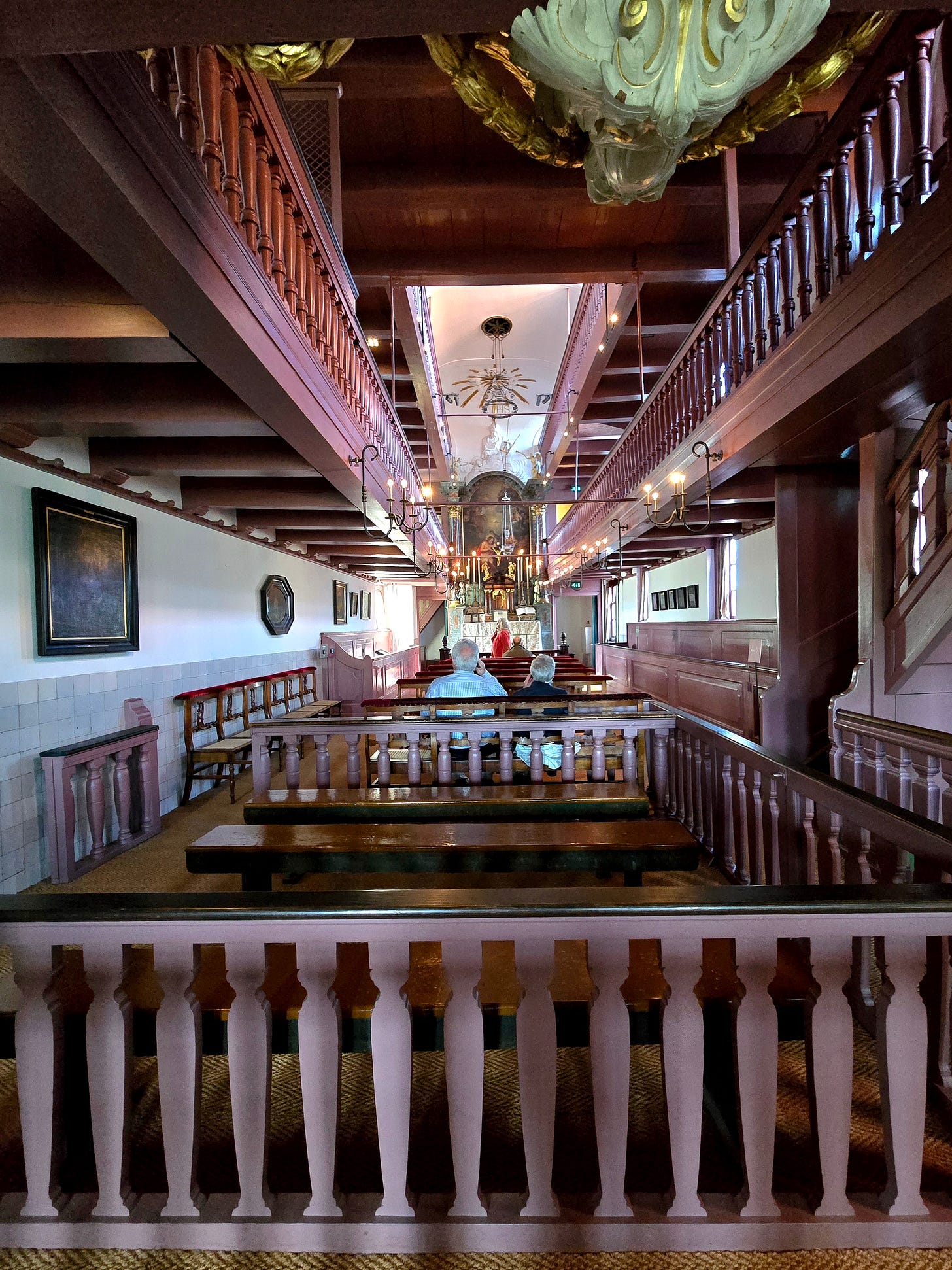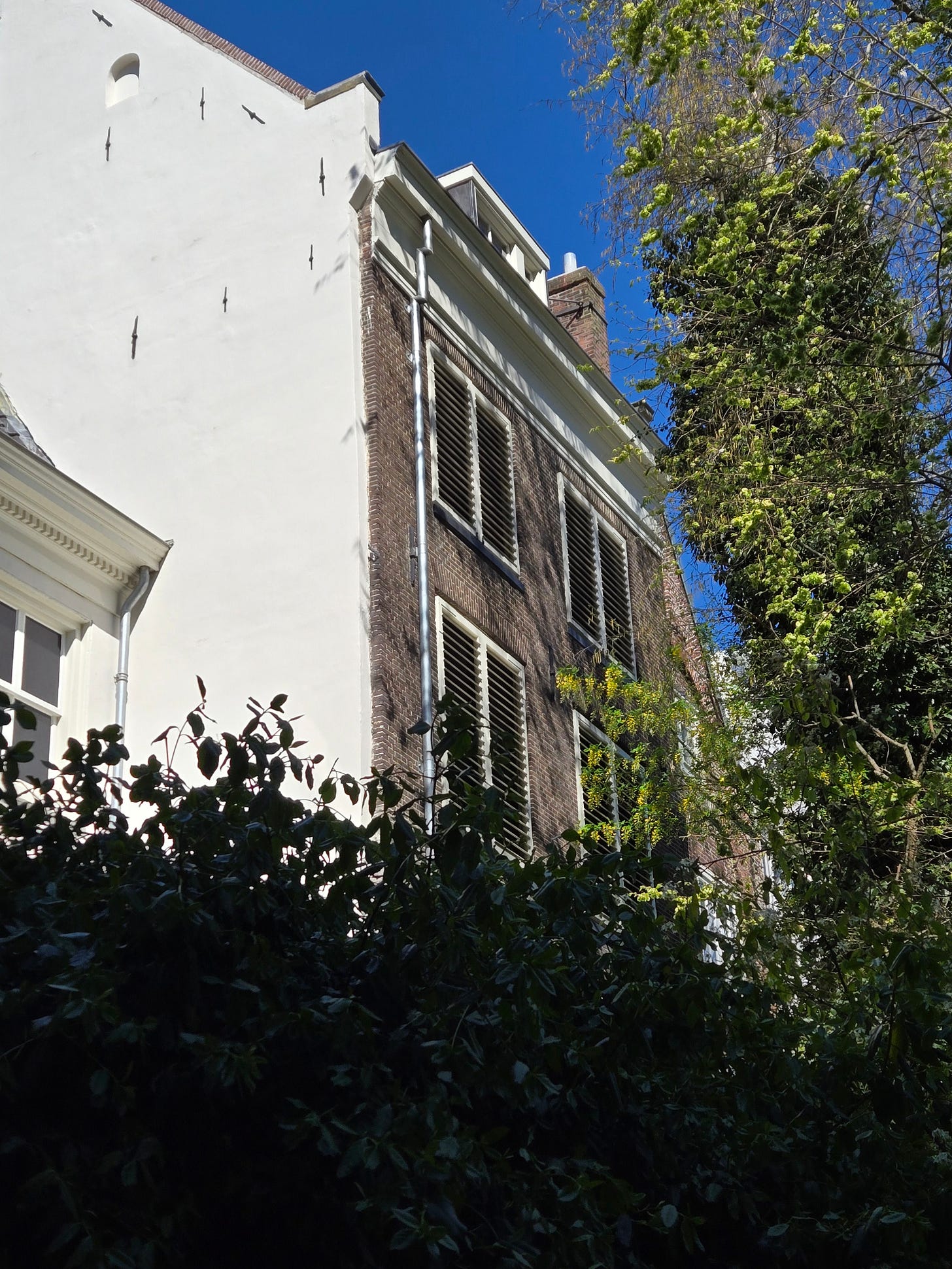In 17th century Amsterdam the practice of Catholicism was prohibited. The Netherlands had finally overthrown the dominance of Spain and its religion after 80 years of war, and the many Catholic churches in the Netherlands were converted to Calvinist churches. Today, we still see golden roosters on many steeple tops, representing this change, although in today’s Netherlands there is freedom to worship as one chooses.
But back in the 1600s, if I had wanted to participate in a Catholic Mass I would have had to do it in secret, in a church that was hidden. On a recent trip to the Netherlands we visited one such hidden church. Our Lord in the Attic is literally a church in an attic in the center of Amsterdam, built in a house owned by the wealthy merchant Jan Hartman in 1661. Today it is both an active Catholic church and a museum.
Masses are offered on a monthly basis, and visitors are welcome to attend. In between Masses, patrons pay a small fee to explore the home, navigate the many winding staircases that lead up to a fully-functional and very ornate church that seats 150 people. In the attic.
It is nothing short of astounding.
In the same city, separated by about 4 kilometers and over 400 years, stands another house that hid something precious, the lives of 8 human beings. Here, in a few rooms of an ordinary looking house, hidden behind a moveable bookcase, these people were concealed for over two years, in a valiant attempt to save them from the Nazis who were occupying the Netherlands.
I name them here because it is important to say their names: Otto and Edith Frank and their daughters, Margot and Anne. Hermann and Auguste van Pels and their son Peter. Fritz Pfeffer. The people who hid them were friends and employees of Otto Frank. I name them here because it is important to say their names: Victor Kugler. Johannes Kleiman. Johan Voskuijl. Bep Voskuijl. Miep Gies. Jan Gies. Sadly, as we know, the precious humans hidden in that house were discovered and except for Otto, none survived the concentration camps. In fact we know that Margo and Anne died only a month or two before the war ended and the camps were liberated. Two of their protectors were also arrested, but survived.
Protecting something that we know is precious can be dangerous. This leads me to wonder, as we witness an increase in authoritarianism in our own times, what do we hold precious enough that we would take risks for? Is there something or someone we would go to great lengths to hide? To conceal from those who might do harm?
Would we hide away a library full of books including the banned ones? A clinic committed to providing life-giving health care to all, regardless of sex or gender status? A school that teaches a full curriculum including the full history of a country, both the bright shining moments and those moments we might not be as proud of? Would we hide families seeking asylum?
What is so precious that we would hide it from those who would do harm to it? For Jan Hartman, it was his church, and the religious practice that he was so devoted to. For Victor Kugler and the other helpers, it was the lives of their friends. What might it be for me? For you?
For more about the hidden church: https://opsolder.nl/en/museum-our-lord-in-the-attic/
For more about the Anne Frank house: https://www.annefrank.org/en/








Good to ponder—thanks Denise❤️
Denise- just powerful: thought provoking and challenging. Merci,
Jeannie